by Giorgio Cafiero and Theodore Karasik
Since 1979, Iran’s regime has sought to champion itself as a defender of oppressed Shi’ite Arabs across the Middle East. Unsurprisingly, however, one area of the Arab world where Tehran does not promote marginalized Shi’ite resistance against the authorities is Khuzestan (also known as Arabistan). This resource-rich yet underserved Iranian province—situated across the border from Iraq’s Basra province—is home to approximately two million Iranians who are ethnically Arab, commonly referred to as Ahwazi Arabs, as well as more than 90 percent of Iran’s oil capacity.
Ahwazi Arabs in Khuzestan have grievances about state-sponsored oppression, discrimination, marginalization, environmental hazards, and poverty under Persian/Iranian rule. Although officials in Tehran deny such human rights abuses, Amnesty International, Human Rights Watch, and other organizations that document the oppression of minority groups have found the Ahwazi Arabs’ complaints to be legitimate.
Having exercised various degrees of autonomy throughout Iran’s pre-1979 history, segments of the Iranian Arab population dream of establishing an independent and oil-rich Ahwazi Arab state in southwestern Iran. Separatist movements in Khuzestan include both militant factions such as the Ahwaz Arab Renaissance Party and non-violent ones. Since the mid-2000s, when a series of bombings tore through Khuzestan, friction between the Iranian state and militant Ahwazi Arab separatists has intensified.
In 2011, a popular revolt in Ahvaz, which drew inspiration from the Arab Spring uprisings, resulted in security forces killing 15 Ahwazi Arabs demonstrating against Iran’s regime. In 2015, Younes al-Asakirah—a street vendor in Khorramshahr—set himself on fire to protest injustice in Khuzestan, setting off a series of protests throughout the province. At al-Asakirah’s funeral, many attendees voiced their grievances against the Islamic Republic, leading to a crackdown and a series of arrests. Earlier this year anti-government demonstrators took to the streets of Khuzestan after 11 of the province’s cities experienced power outages amid a dust storm, ultimately ending in riots.
To be sure, the majority of Ahwazi Arabs are non-violent and do not wish for Khuzestan to spiral into tumult as have many other parts of the Middle East. Nonetheless, since the mid/late-2000s, armed Arab separatist insurgent groups such as the Arab Struggle Movement for the Liberation of Ahwaz (ASMLA) have conducted scores of attacks on energy infrastructure, government buildings, and security forces in Khuzestan.
As most Iranian Arabs in Khuzestan practice Shi’ite Islam, violent unrest in this province has unfolded as a largely ethnic conflict. At international soccer games involving Gulf Cooperation Council (GCC) states, some Ahwazi Arabs have chanted slogans against their government steeped in Arab nationalism as they show support for teams visiting from Persian Gulf Arab states. Certain Iranian Arabs have expressed solidarity with the Saudi-led Arab coalition fighting the Houthi rebels allied with Tehran as well as the Sunni rebels fighting the Iranian-backed Syrian regime. In this way they have demonstrated support for Saudi efforts to contain the expansion of Iranian influence in these two Sunni-majority Arab countries.
Ties to Arab Regimes
Inhabitants of this Iranian province are tribally, culturally, and ethnically linked to segments of Iraq’s Arab population. Saddam Hussein, who long championed various Arab causes, sought to turn Iran’s Arab minority against the Islamic Republic during the Iran-Iraq war (1980-1988). But he yet failed to do so as Khuzestan’s locals sided with their government, and many of them fought courageously against invading Iraqi forces.
Despite this history of Ahwazi Arab loyalty, as Saudi-Iranian proxy wars intensify—most recently in Lebanon and Yemen—Iranian officials are blaming violence in Khuzestan on GCC states, namely Saudi Arabia and the United Arab Emirates (UAE). In 2013, ASMLA claimed responsibility for an attack on a gas pipeline linking Shadegan to Sarbandar, marking the group’s sixth attack that year, days after Iran’s state-owned media reported that ASMLA members, who had allegedly carried out attacks in Shush and Haft Tepe in 2012, were recipients of financial support and training from Dubai.
Unanswered questions surrounding the murder of ASMLA founder Mola Nissi this month in The Hague illustrate Tehran’s growing concerns about Riyadh stoking Arab separatism in Khuzestan. Nissi, who in July told Reuters that ASLMA seeks to “liberate Ahwaz lands and people from the Iranian occupation,” was preparing a Saudi-funded television station to target Iran’s Arab minority.
Iran’s concerns heightened after Saudi Arabia’s de facto ruler, Crown Prince Mohammed bin Salman (MbS), announced in May that any Saudi-Iranian fight would be waged “inside Iran, not in Saudi Arabia.” As Donald Trump’s administration has voiced its support for regime change in Tehran, Iranian authorities are likely to view not only Khuzestan, but also Sistan Baluchistan, Kurdistan, West and East Azerbaijan, and Zanjan provinces as areas in which the Islamic Republic’s adversaries will exploit simmering ethno-sectarian tensions. Exacerbated instability in Khuzestan would constitute a dire threat to Iran’s oil exports and by extension the entire country’s economic health.
Iran’s Khuzestan and Saudi Arabia’s Eastern Province (EP) mirror each other in the sense that both oil-rich provinces are home to marginalized ethnic/religious minorities who complain of state-sponsored oppression and discrimination. The Arabs in Khuzestan and the Shi’ites in the kingdom’s EP both live on top of the majority of their respective countries’ oil reserves yet have not reaped the rewards of such petro-wealth. Without Tehran meaningfully addressing the conditions in Khuzestan that fuel militant separatists to resist “Iranian occupation,” Saudi Arabia will likely continue to maintain an interest in exploiting local grievances.
Implications for US Foreign Policy
The potential for Saudi Arabia and Iran’s proxy war to fuel further violence in Khuzestan raises the stakes for Washington where a rift has emerged regarding Riyadh’s foreign policy. Trump and some of his foreign policy advisors favor countering Iran’s influence by giving Riyadh more free rein to push back against Tehran on terms which the kingdom supports. But others see MbS’s foreign policy as too destabilizing and believe that some of the modest pressures that Barack Obama put on Riyadh could again contain the most excessive aspects of Saudi foreign policy.
Should the Saudis begin sponsoring insurgent groups in Khuzestan more openly, US officials would have to consider how Tehran would perceive Washington’s complicity. Such a development would raise the specter of Iran challenging US interests around the region more aggressively via its own proxies that have threatened US Marines and other military personnel in the GCC. With more Iranians rallying behind the flag, Tehran would likely step up its game of tit-for-tat in other parts of the Arab world such as Iraq, Syria, or Bahrain.
Under such circumstances, should the Islamic State (ISIS or IS) reemerge in parts of Iraq and Syria where it has recently lost so much territory, Washington would have difficulty in reviving its unofficial cooperation with Tehran in the fight against the Sunni extremists.
Theodore Karasik is a senior advisor at Gulf State Analytics. Photo: Protest by Ahwazi Arabs in front of the European Union headquarters in Brussels in February 2017 (Kom News)

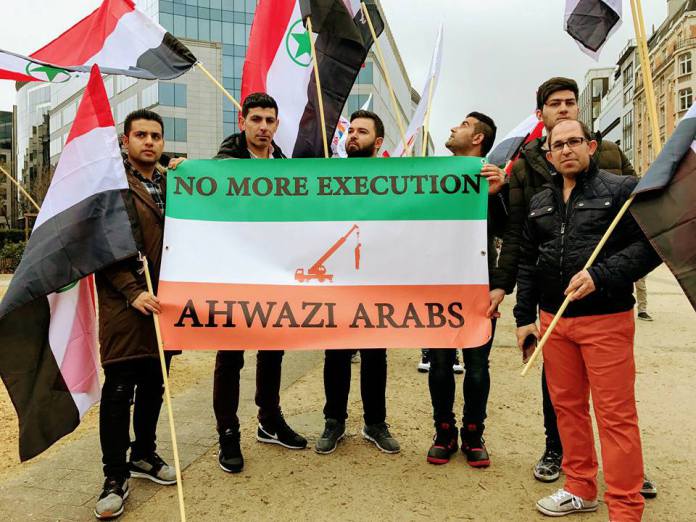
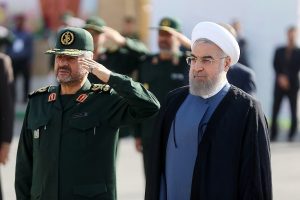
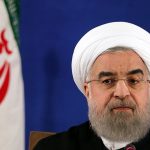
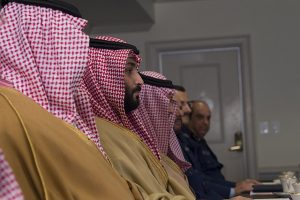
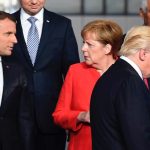
Can AHWAZI Arabs represent all of Khuzestan? no way.
The author of this article makes a big mistake in his analysis.
Iran is an ancient country and a real nation state.
People with various languages and origins have been living in peace for a long time in this country.
Religious and ethnical tensions similar to what you can encounter in Bahrein, Saudi Arabia or Syria which are built on artificial borders do not really exist in Iran. A lot of people in Arab countries in Persian Gulf would like to export the religious tensions they have to Iran too.
By the way people living in Ahwaz are sunni Iranians and not Arabs.
Firstly, Khusestan was the birthplace of Persian state over 2600 years ago. Secondly given that population of the state was around 5M in 2004, it is perhaps about 6M now. 50% of people there are Bakhtiari, a branch of Persian ethnic group. CIA fact book says the total number of Arabs living in Iran is 1.6M and they are distributed in Khuzestan as well as a number of other Southern states. Therefore assuming the total number in that province to be 1M, it is less than 20% of overall population. The term “occupation” is pretty silly.